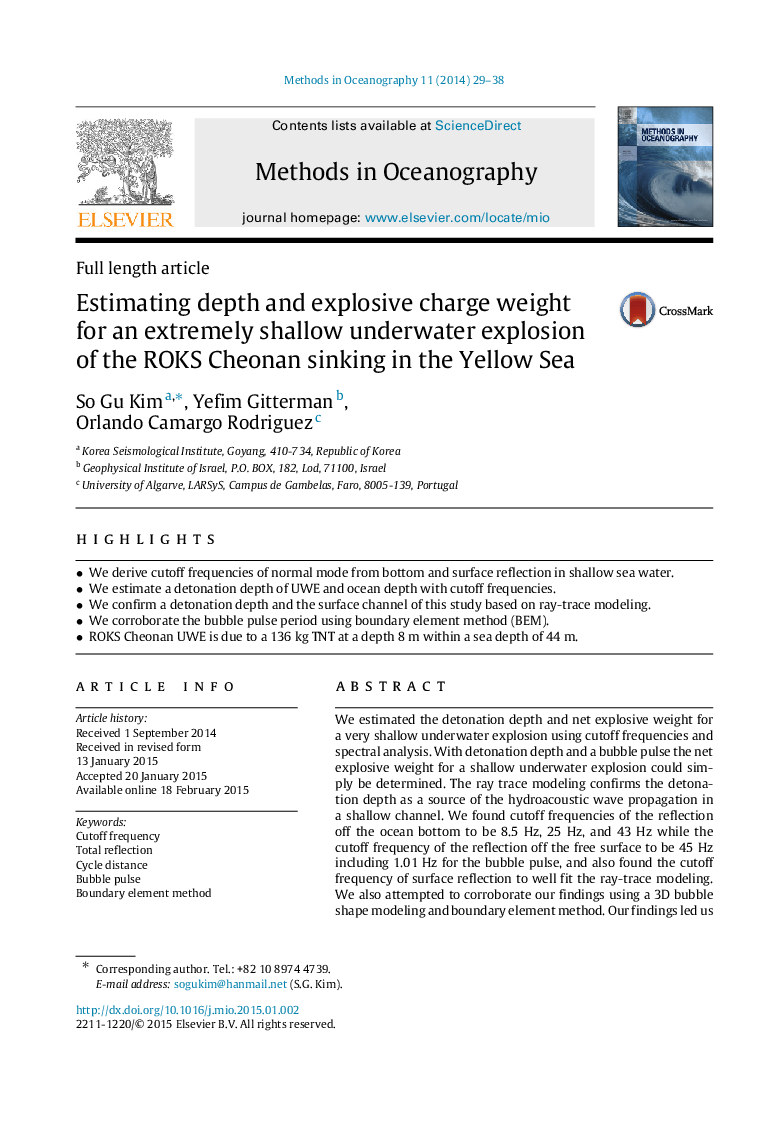| Article ID | Journal | Published Year | Pages | File Type |
|---|---|---|---|---|
| 1723287 | Methods in Oceanography | 2014 | 10 Pages |
•We derive cutoff frequencies of normal mode from bottom and surface reflection in shallow sea water.•We estimate a detonation depth of UWE and ocean depth with cutoff frequencies.•We confirm a detonation depth and the surface channel of this study based on ray-trace modeling.•We corroborate the bubble pulse period using boundary element method (BEM).•ROKS Cheonan UWE is due to a 136 kg TNT at a depth 8 m within a sea depth of 44 m.
We estimated the detonation depth and net explosive weight for a very shallow underwater explosion using cutoff frequencies and spectral analysis. With detonation depth and a bubble pulse the net explosive weight for a shallow underwater explosion could simply be determined. The ray trace modeling confirms the detonation depth as a source of the hydroacoustic wave propagation in a shallow channel. We found cutoff frequencies of the reflection off the ocean bottom to be 8.5 Hz, 25 Hz, and 43 Hz while the cutoff frequency of the reflection off the free surface to be 45 Hz including 1.01 Hz for the bubble pulse, and also found the cutoff frequency of surface reflection to well fit the ray-trace modeling. We also attempted to corroborate our findings using a 3D bubble shape modeling and boundary element method. Our findings led us to the net explosive weight of the underwater explosion offshore of Baengnyeong-do for the ROKS Cheonan sinking to be approximately 136 kg TNT at a depth of about 8 m within an ocean depth of around 44 m.
